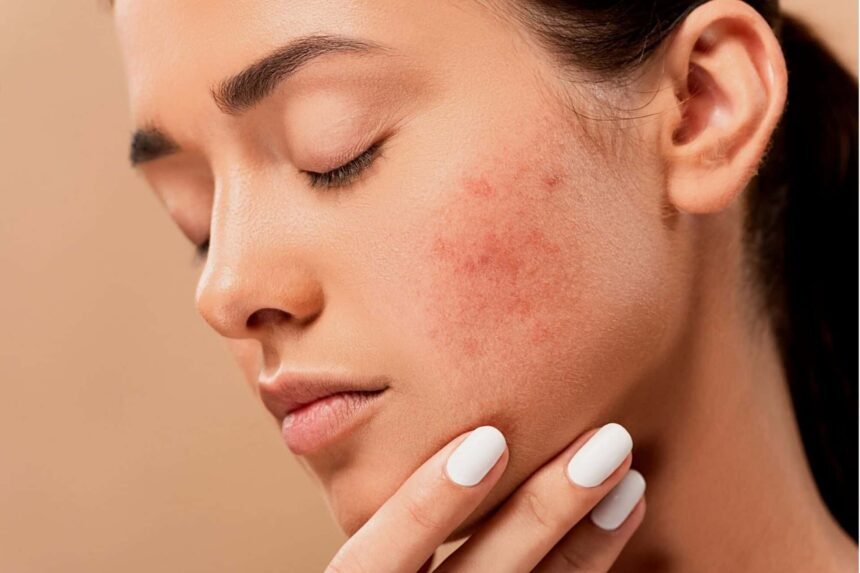Many people have to deal with breakouts on their faces and bodies. In fact, the National Institutes of Health (NIH) estimates that one in ten individuals worldwide suffers from acne. Recognizing the various forms of acne you have is a major first step in managing and curing it. We’re focusing on hormonal vs. bacterial acne from a dermatologist’s perspective because they can appear identical but differ significantly.
Does Hormonal Acne Exist?
According to Scottsdale, Arizona-based board-certified dermatologist Brooke Jeffy, MD, FAAD, hormonal acne is caused by changes in hormone levels in the body and typically manifests as painful, deep cystic lesions on the lower face and neck.
She says, “It is more common in women and teenagers, especially during menstruation, pregnancy, and menopause.” “These variations cause an increase in oil production, which clogs pores and encourages the growth of bacteria.”
Board-certified dermatologist Kiran Mian, DO, FAAD, of Hudson Dermatology & Laser Surgery, notes that hormonal acne usually flares up cyclically after a menstrual cycle.
According to her explanation, “it usually begins flaring one week prior to the cycle or during the onset of the menstrual cycle.” “It can occur on the forehead and cheeks, but it seems to most commonly affect the lower face, jawline, and chin area.”
Handling Hormonal Pimples
Often, oral drugs to regulate hormone fluctuations (particularly, by inhibiting the androgen receptor) and topical therapies to unclog pores are used in conjunction to treat hormonal acne. In addition to retinoids, benzoyl peroxide, and/or salicylic acid, Dr. Jeffy suggests utilizing an oral contraceptive or spironolactone medication.
She continues, “Getting enough sleep is essential to lowering cortisol fluctuations, which can also raise oil production.” “Reducing dairy can also help reduce inflammation and the production of oil.”
Bacterial Acne: What Is It?
There are nearly invariably some pustules present in acne with a high bacterial component. Although it can occur anywhere on the face or body, according to Dr. Mian, it typically manifests in regions like the forehead, cheeks, and nose that have a high concentration of oil glands.
She says, “The lesions tend to be red and inflamed and do not happen in a cyclical way.” “They usually involve some pus-filled acne lesions that are squeezable,’ but that doesn’t mean you should squeeze them!”
How to Handle Bacterial Acne
Reducing the amount of germs on the skin’s surface is the aim of treating bacterial acne.
Dr. Mian says that using benzoyl peroxide, either as a topical or face wash, followed by an antibiotic lotion like clindamycin will help limit bacterial acne by lowering the number of germs on the skin.
She also points out that since sebum serves as “food for bacteria,” it is beneficial to use retinoid creams to avoid oil congestion. Avoiding dairy can also be beneficial because it often causes inflammation.
The Distinction Between Bacterial and Hormonal Acne
In summary, hormonal acne is brought on by changes in hormone levels and typically manifests as painful, deep cysts beneath the skin. On the other hand, bacterial acne is more likely to form on the skin’s surface, is caused by a high concentration of bacteria and oil, and frequently includes pus.
Treatment for hormonal acne involves using hormonal fluctuation-controlling oral drugs, whereas treatment for bacterial acne involves using an antibacterial lotion to reduce the number of germs. Together with dietary changes, and lifestyle modifications pertaining to stress, sleep, and diet, they also gain from topical acne treatments such as retinoids, salicylic acid, and benzoyl peroxide.
Whenever to Consult a Dermatologist
If, after utilizing over-the-counter therapies and changing your lifestyle, you haven’t seen any change in your hormonal or bacterial acne within three months, you should consult a dermatologist.
According to Dr. Jeffy, untreated acne, particularly big, painful cysts, can leave lifelong scars. For this reason, therapy is crucial. Within a few weeks after receiving professional treatment, you can begin to see clearer skin, which will increase your comfort and confidence.









